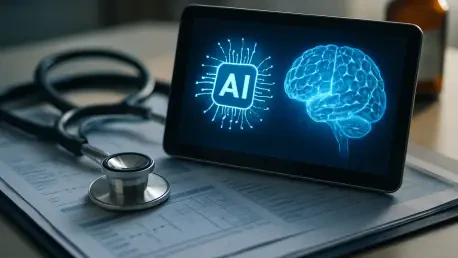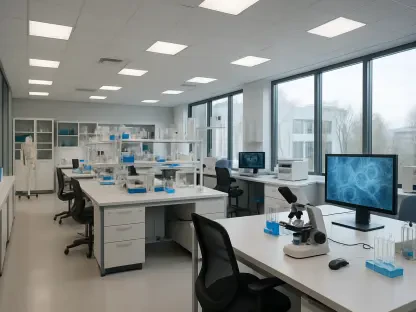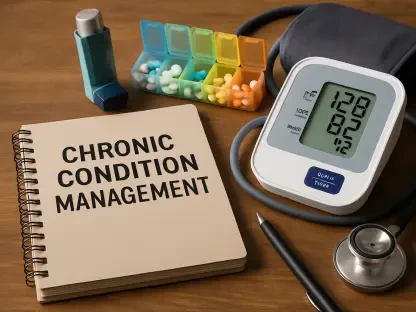What if a tiny device on your wrist could alert you to a looming health crisis before any symptoms appear, transforming the way we approach wellness? In 2025, this scenario is no longer a distant dream but a daily reality for millions across the globe. Artificial intelligence (AI) and wearable technology are reshaping healthcare, turning reactive treatment into proactive prevention. These tools are not mere accessories; they are powerful allies in the fight for better health outcomes, offering a glimpse into a future where care is personalized, immediate, and accessible.
The Power of Tech in Health: Why It Matters Now
The significance of AI and wearables in healthcare cannot be overstated. With aging populations, escalating costs, and lingering gaps in access exposed by recent global challenges, the strain on medical systems is immense. These technologies step in as game-changers, providing solutions like early disease detection and remote patient monitoring that save both time and lives. As healthcare data is projected to reach staggering volumes in the coming years, the urgency to adopt such tools grows, addressing critical needs while raising vital questions about privacy and fairness.
This shift is not just about innovation for its own sake. It represents a fundamental change in how care is delivered and experienced. Patients gain empowerment through real-time insights into their health, while providers benefit from data-driven precision. Yet, the stakes are high—ensuring equitable access and safeguarding sensitive information remain paramount challenges that demand attention alongside technological advancement.
Cutting-Edge Innovations Driving a Health Revolution
AI: Precision at the Core of Diagnosis
AI stands as a pillar of modern medical practice, revolutionizing everything from spotting early signs of cancer in scans to tailoring individual treatment plans. With the AI healthcare market expected to grow at a 38.5% compound annual growth rate from 2025 to 2030, its influence is undeniable. Studies show that 79% of healthcare organizations already see a significant return on investment, highlighting AI’s role in enhancing accuracy and efficiency, though hurdles like data bias still need resolution.
Beyond diagnostics, AI algorithms assist in predicting patient outcomes, enabling hospitals to allocate resources more effectively. This technology does not aim to replace clinicians but to augment their capabilities, ensuring better decisions with less guesswork. The balance between human expertise and machine intelligence is shaping a new standard in clinical environments.
Wearables: Empowering Patients Every Day
Wearable devices, such as smartwatches and glucose monitors, have become indispensable for many, with over 60% of telehealth users in the U.S. sharing vital data with their doctors. These tools support the management of chronic conditions like diabetes and encourage preventive habits by tracking heart rates and activity levels. However, concerns about data accuracy and the burden of information overload for medical staff persist as barriers to seamless adoption.
The impact of wearables extends to fostering a sense of control among users. Patients no longer wait for appointments to understand their health status; instead, they access immediate feedback through a device on their arm. This accessibility is transforming the patient-provider dynamic, making collaboration a cornerstone of care.
Cloud and Big DatThe Foundation of Connectivity
The explosion of health data requires robust systems for storage and analysis, and cloud computing meets this demand head-on. Predictive analytics powered by big data have already slashed hospital readmission rates by up to 40%, proving their worth in operational efficiency. Still, cybersecurity risks loom large, with compliance to standards like HIPAA remaining a non-negotiable priority to protect patient trust.
Cloud infrastructure enables a level of integration previously unimaginable, linking disparate systems into a cohesive network. This connectivity allows for real-time updates and insights that can alter treatment plans on the fly. The challenge lies in fortifying these systems against breaches while ensuring they remain accessible to all who need them.
Big Tech’s Role: Progress with Caution
Tech giants like Apple and Amazon are diving deep into healthcare, with tools like HealthKit and acquisitions such as One Medical pushing digital health forward. Their innovations, from ECG features on smartwatches to streamlined primary care services, accelerate change in the industry. Yet, their involvement sparks debate over data ownership and whether their influence might overshadow smaller players.
The resources and reach of these companies can drive rapid advancements, offering patients and providers cutting-edge solutions at scale. However, the potential for data monopolies raises red flags, necessitating strict oversight to ensure that innovation serves the public good rather than corporate interests alone.
Connected Ecosystems: A Vision of Seamless Care
The concept of connected health ecosystems, fueled by the Internet of Medical Things and mobile applications, promises fluid data exchange across platforms. Real-time alerts and interventions become possible, enhancing responsiveness in emergencies. Nevertheless, outdated infrastructure and security vulnerabilities slow the journey toward fully integrated care systems.
Achieving this vision requires breaking down silos between providers and technologies, creating a network where information flows effortlessly. The potential to save lives through quicker, better-informed decisions is immense, but it hinges on overcoming technical and ethical obstacles that currently fragment the landscape.
Real Stories, Real Impact: Voices from the Frontlines
In a busy hospital, Dr. Sarah Bennett, a seasoned radiologist, relies on AI to detect early-stage lung cancer with remarkable precision. “This technology doesn’t take over—it sharpens my focus on what matters most,” she explains, emphasizing its role as a partner in her work. Her experience reflects a broader trend, with research indicating widespread adoption and measurable benefits in clinical settings across the board.
Meanwhile, patients feel the change just as profoundly. John Miller, who manages diabetes, credits his wearable glucose monitor for a newfound sense of autonomy. “Having constant updates on my levels means I’m not guessing anymore—I’m living with confidence,” he shares. These personal accounts underscore the tangible difference technology makes, turning abstract innovation into lived reality.
The convergence of such stories paints a vivid picture of transformation. From hospital wards to home settings, the synergy of AI and wearables is rewriting the rules of engagement with health. It’s a shift felt not just in statistics but in the day-to-day experiences of those giving and receiving care.
Charting the Path Forward: Practical Steps for All
For patients, embracing wearables offers a window into personal health, but it’s crucial to pair usage with guidance from providers to interpret data accurately. Selecting devices with strong privacy features and proven reliability ensures safety and effectiveness. This proactive approach can turn raw information into meaningful action.
Healthcare providers must integrate AI and wearable data into their practices, prioritizing training to handle the influx of information without overwhelm. Building workflows that transform data into actionable insights is key to maintaining quality of care. Collaboration with tech experts can smooth this transition, ensuring tools enhance rather than complicate clinical routines.
Policymakers face the task of balancing innovation with equity, crafting regulations that protect data while expanding access to underserved communities. Investments in digital infrastructure can bridge gaps, making sure no one is left behind in this tech-driven era. A focus on security standards will further solidify trust in these systems.
Tech developers hold a responsibility to design AI and wearables with transparency and user-friendliness at the forefront. Adhering to global privacy regulations like GDPR builds credibility, while intuitive interfaces encourage adoption across diverse populations. Their role is pivotal in making technology a trusted ally in health.
Reflecting on this journey, the strides made in blending AI and wearables with healthcare stand as a testament to human ingenuity. The stories of improved diagnoses and empowered patients echo through countless lives, marking a turning point in medical history. Looking ahead, the focus shifts to actionable measures—ensuring every stakeholder plays a part in refining these tools. Strengthening security, expanding access, and fostering trust emerge as the cornerstones for sustaining this momentum, promising a healthier, more connected tomorrow.









